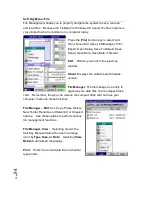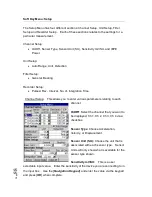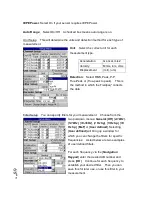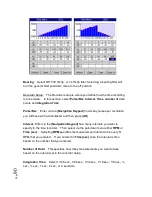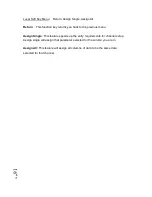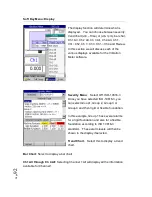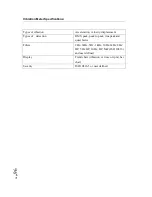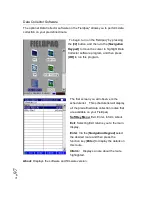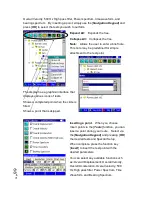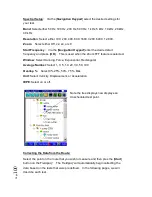
P
ag
e
89
IEPE Power
: Select On if your sensor requires IEPE Power.
Auto Range
: Select On/Off. A checked box means auto range is on.
Unit Setup: This will determine the units and detection method for each type of
measurement.
Unit
: Select the correct unit for each
measurement type.
Detection
: Select RMS, Peak, P-P,
True-Peak or (True-peak to peak). This is
the method in which the Fieldpaq
tm
collects
the data.
Filter Setup: You can specify filters for your measurement. Choose from the
two pull-down menus:
General
:[
Off
], [
2-1kHz
],
[
5-1kHz
], [
10-1kHz
],
[
2 Hz hp
], [
5 Hz hp
], [
10
Hz hp
], [
MeF
] or [
User defined
]. Selecting
[
User defined
] will bring up a window for
which you can change the filters for specific
frequencies. Listed below are two examples
of user defined filters.
For each frequency, via the [
Navigation
Keypad
] enter the desired dB number and
press [
OK
]. Continue for each frequency to
establish your desired filter. Then you can
save this for later use, or use this filter in your
measurement.
Acceleration Gs, Gal, m/s2
Velocity
Mm/s, in/s, cm/s
Displacement
(mil), (um)
Summary of Contents for Fieldpaq
Page 5: ...Page 4 ...
Page 54: ...Page 53 Orbit x y ...
Page 61: ...Page 60 ...
Page 104: ...Page 103 Power Spectrum Time Waveform Bearing Spectrum ...
Page 199: ...Page 198 ...
Page 200: ...Page 199 DVF specifications Maximum frequency band Maximum resolution Maximum file size ...
Page 204: ...Page 203 Done ...
Page 206: ...Page 205 5 Start the Data Explorer Program 6 Select File Import ...
Page 215: ...Page 214 ...
Page 222: ...6 ...










